Are you concerned about your dog shaking head after ear cleaning? Keep reading to find out more.
If your dog’s ears are in good health, you know he appreciates having them rubbed. He’ll back away from you if they’re painful from an injury or infection, and he won’t let you touch him. So lightly touching your dog’s ears is an excellent first step in determining their health. It’s time to take a closer look if you discover he’s uncomfortable having them touched.
Should I clean dog ears?
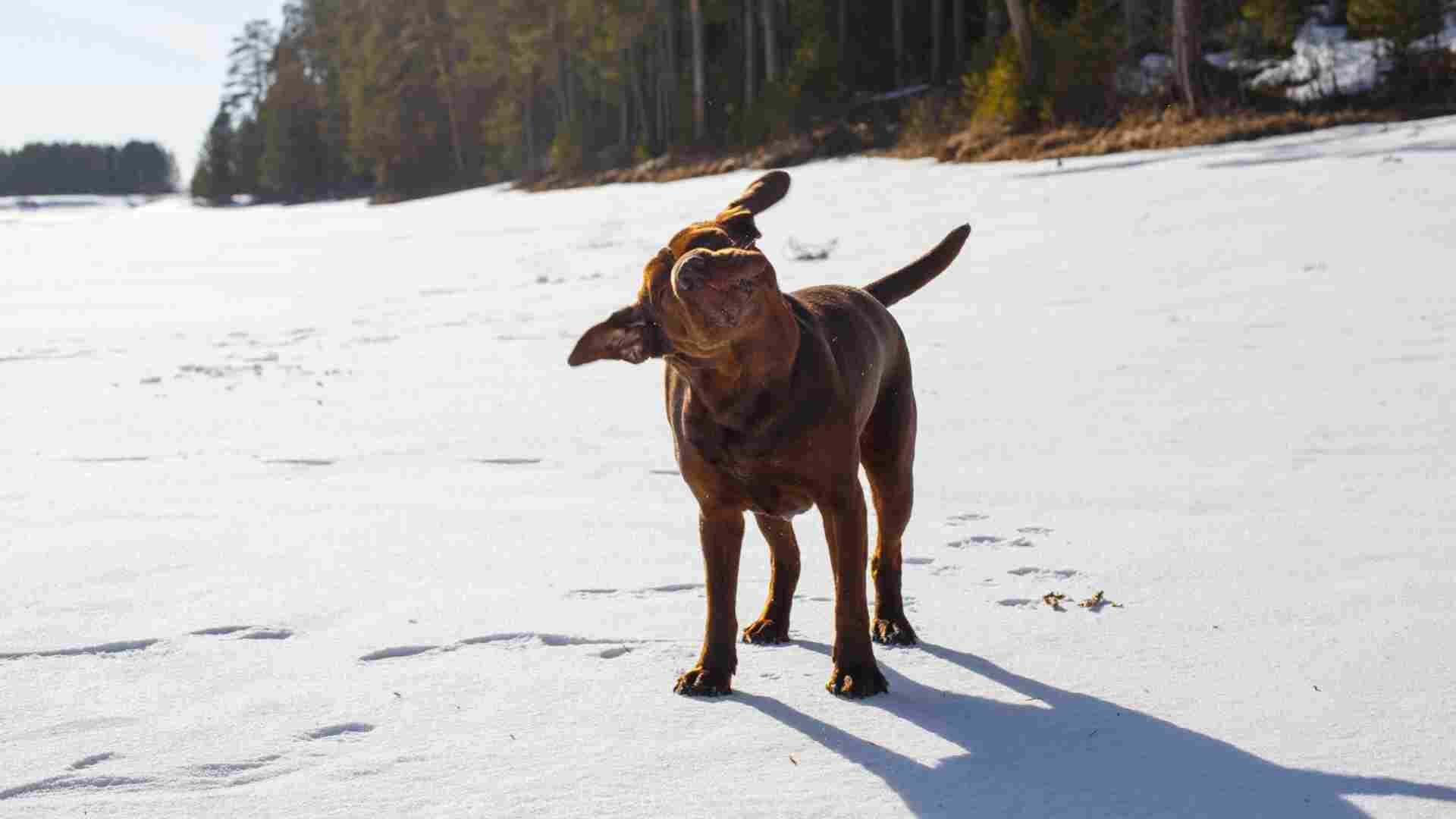
A dog’s ear canal is much deeper than a human’s, and if it isn’t correctly cared for, it can cause many complications. Canines are susceptible to various illnesses due to our negligence and negligence of their ears.
While it’s vital to clean your dog’s ears as needed, excessive washing can create ear canal inflammation, which can cause infections. Certain dogs may never require ear cleaning if their ears are healthy and clean. Cleaning your dog’s ears is suggested if you observe drainage or a smell when inspecting the ear. Your veterinarian can advise you on how often you should clean your dog’s ears. Consult your veterinarian before cleaning your dog’s ears if they are red, swollen, or sensitive. Your dog may have an ear infection or a damaged eardrum.
Why is it important to clean dog ears?
Material lodged deep inside the horizontal canal of the dog’s ear canal is hard to discharge without the help of cleanings due to the nature of the ear canal. If not eliminated, this substance can cause itching and ear infections.
Owners who know the significance of a dog’s hearing, the shape of its ears, and the diseases that might occur will be able to see why cleaning them is so important. In the most severe cases, a build-up of dirt and infections can cause pain and even deafness.
Is it normal for dogs to have ear wax?
Yes, a tiny quantity of wax in your dog’s ears is natural. Although we may consider ear wax disgusting, it serves a crucial purpose for humans and our four-legged pals. Ear wax keeps debris, pollen, and grime out of the ears. The ears work like a self-cleaning oven in that as ear wax accumulates and goes out of the ear, it collects all of the junk.
Additionally, certain breeds, including Cocker Spaniels, Basset Hounds, and English Bulldogs, are vulnerable to severe ear wax and require increased ear cleanings to avoid illness.
Healthy ear wax will be light to golden yellow. However, if you have a dog who enjoys rolling around in the mud, perhaps some light brown ear wax is regular. When dirt mixes alongside standard ear wax, it can seem like dark brown ear wax. If this isn’t the case, it’s best to seek advice from a veterinarian.
Why is your dog shaking head after ear cleaning?
After a bath or a swim, dogs shake their heads. It’s a natural dog trait that you shouldn’t be concerned about. Headshaking, however, can become a concern if your dog does it frequently.
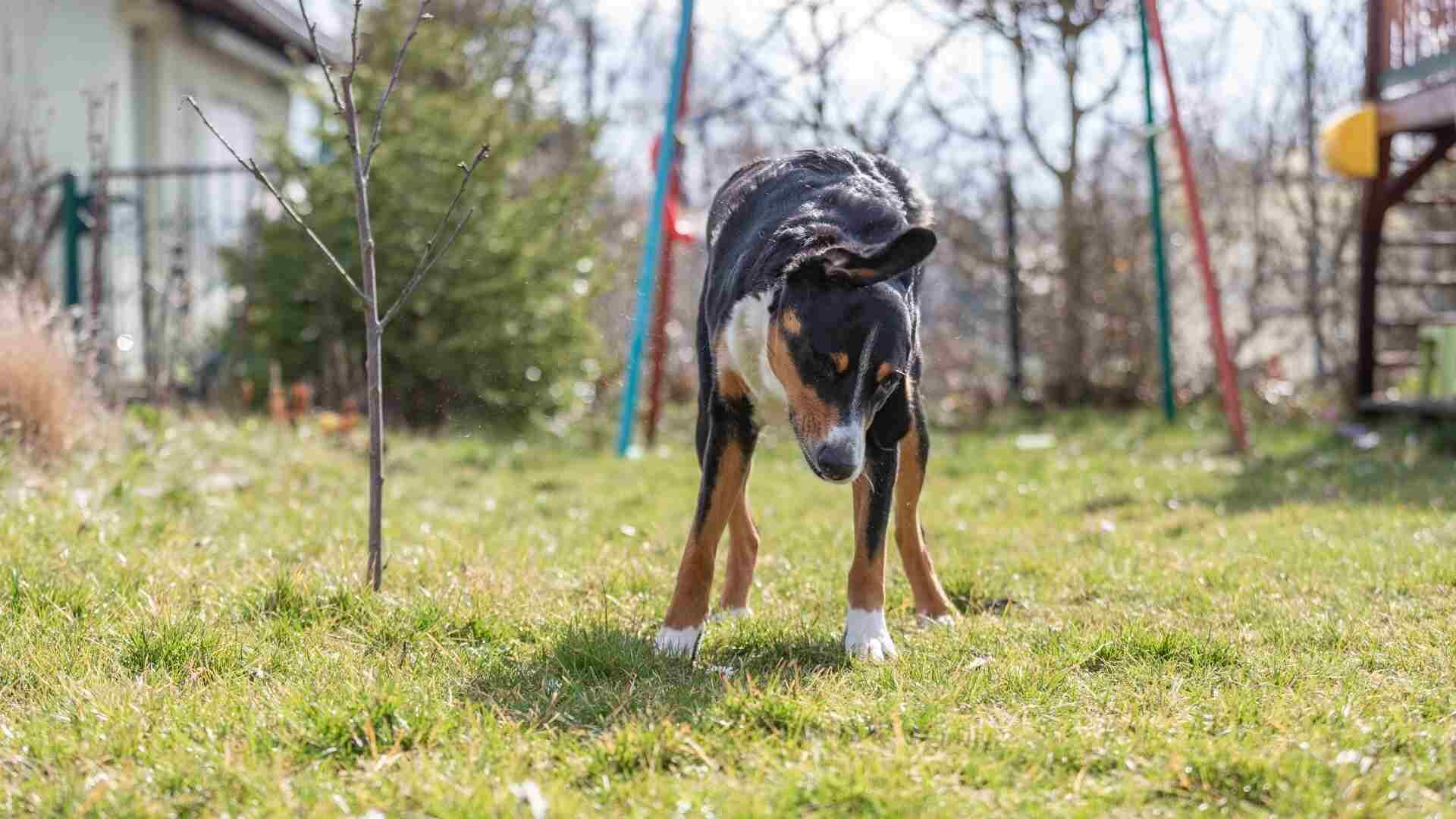
Dogs’ ears exist in various forms and sizes, but they always have one thing in common: a long ear canal with vertical and horizontal sections. This unusual ear structure can quickly trap debris, increasing the risk of ear infections in dogs.
Whenever something gets stuck in their ears, and they need to get rid of it, dogs shake their heads naturally. Whether it’s itchiness or discomfort in their ears, a dog will shake his head reflexively in response. While shaking can remedy the problem if it’s just a little water or a bug in the ear, continual shaking signals that something more is going on within the dog’s ear that must be dealt with as soon as possible.
However, you won’t always be capable of seeing what’s bothering your dog’s ears with bare eyes, but if he shakes his head a lot, something is bothering him. Although there are additional possibilities, the most common reasons are an ear infection or an allergy.
What are the causes of dog ear issues?
Below listed and explained are potential causes of ear issues for dogs.
1. Allergies
Allergies in dogs are significantly more frequent and diverse than you might believe. Several dogs suffer from skin allergies that can result in extreme itchiness and recurrent ear infections. If allergies cause, your dog will have ear infections regularly, and you may detect small reddish-brown patches on the inside of his ears. Your dog’s allergy medicine may need to be started as soon as the ear infection therapy.
2. Bacteria
The most prevalent health condition that causes increased head shaking in dogs is an ear infection caused by bacteria. Intense itching, ear drainage, and inflammation are all indicators of an ear infection. You may notice redness, swelling, and drainage inside your dog’s ears, which is frequently accompanied by a foul odour. If your dog spends a lot of time swimming, they are more likely to have a bacterial ear infection.
3. Water in ears
An excellent shake will pull most of the water out of your pet’s ear if it’s just some water. Insert cotton balls in your dog’s ear before washing or swimming if they have persistent water inside the ears after bathing or swimming.
Prevent spraying or dumping water on your pet’s head or ears when bathing him. Alternatively, scrub his cheeks and ears with a damp washcloth and wash him from the neck down. After a swim, cleaning your dog’s ears with just an ear-drying remedy is also a good idea. Consult your veterinarian for an effective and safe product for your dog.
4. Foreign objects inside the ear canal
Swelling and inflammation can occur if a foreign object is found inside a dog’s ear. There could be a bloody discharge as well. To get rid of the foreign entity, the dog might shake his head or paw at his ear. Whenever a dog shakes his head aggressively to try to clear a foreign substance, a blood vessel may break, causing swelling of the dog’s ear flap, known as an auditory hematoma.
5. Ear canal tumors
Pets having ear canal tumours typically display head shaking as a symptom. Ear scratching is frequently accompanied by continuous strong-smelling ear discharge, an irritated, itchy, and aching ear. Lack of coordination and balance, circling, head tilting, facial paralysis, deafness, flashing of the eyes back and forth (nystagmus), or other neurologic symptoms usually develop if the growth originates in the middle or inner ear.
Mistakes to avoid while cleaning dog ears
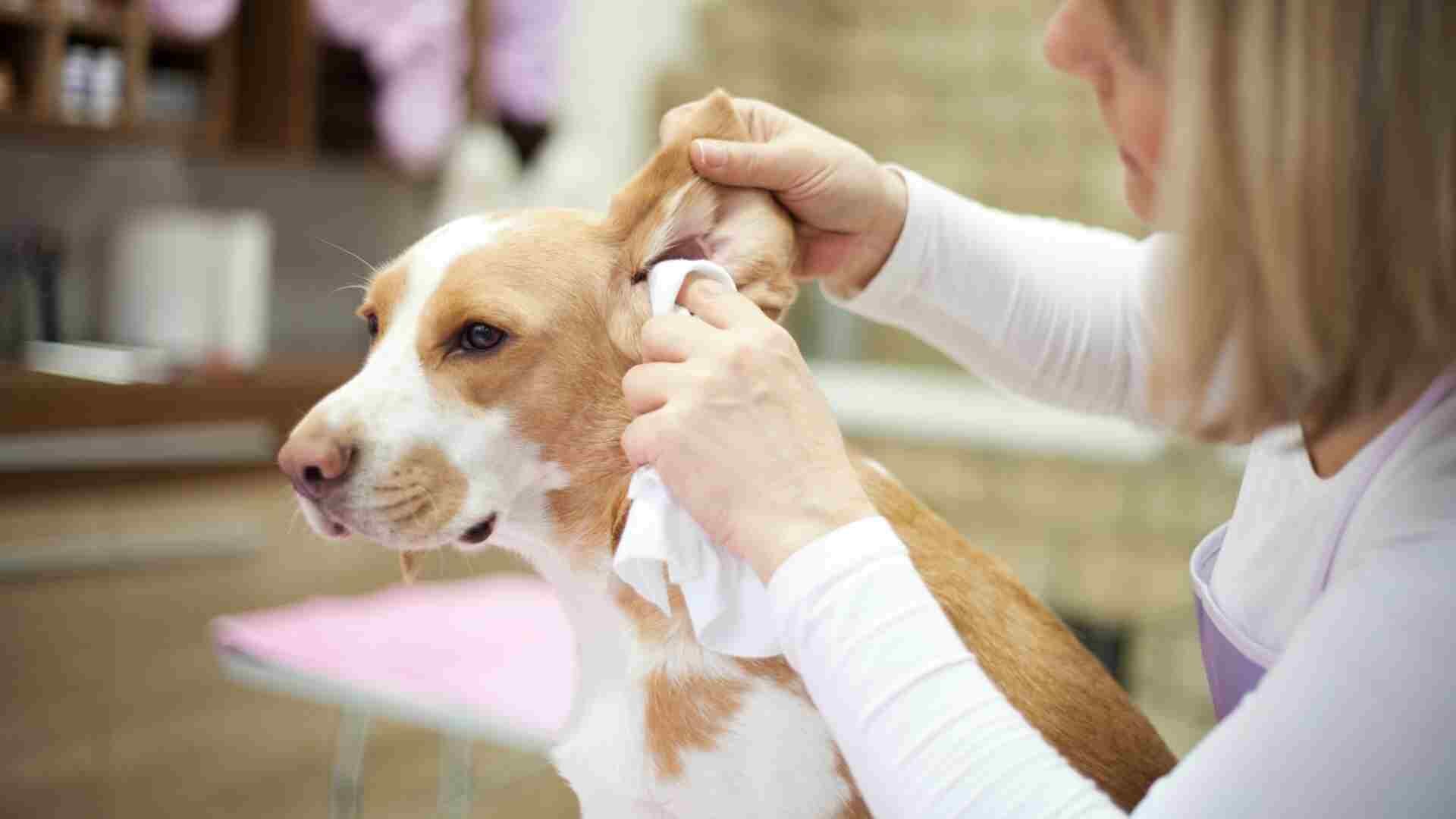
Below listed and explained are potential mistakes that should be avoided with caution while cleaning dog ears.
1. Using insufficient ear cleaning solution
Fill your dog’s ear canal with a cleaning fluid until you see the fluid gathering in the ear canal, then cover the ear flap out over the opening for best cleaning.
The suction aids in the removal of debris from the horizontal canal’s depths. Raising the ear flap can assist in opening the canal and gaining access to the aperture. If pouring the solution in is too tough, soak a large cotton ball in cleaning fluid and position it at the canal’s entry before massaging.
2. Not consulting the veterinarian
Whereas a tiny quantity of earwax is typical, if there is a bad odour, your dog is shaking or scratching frequently, or one or both ears are red, you should consult your veterinarian. These symptoms could indicate a bacterial or fungal ear infection. If left untreated, an ear infection can permanently harm the ear canal or develop into a more severe middle or internal ear infection.
3. Using the incorrect ear cleaning fluid
Since a dog’s ear is formed like an L, it’s critical to use an ear cleaning fluid to help clean out the difficult-to-reach horizontal canal. Select an ear cleanser with components that will assist in acidifying and drying out your ear canal.
The veterinarian is likely to have several specialized products on hand, some of which may contain substances that help break down earwax and others that may help prevent germs or yeast from adhering to the canal’s wall. In a pinch, you can use a solution of one-part white vinegar to two parts water.
4. Using cotton swab
To get your ears squeaky clean, discard the extra liquid and as much dirt as possible after using cleaning fluid. Cotton swabs tend to push wax and debris deeper into the ear canal, making it impossible to remove them. Use a tissue, cotton ball, or pad to help eliminate debris from the fissures that form the entrance to the ear canal. If you must use a cotton swab, ensure the tip is constantly visible.
5. Disciplining your pet
Several dogs despise getting their ears cleaned, so you’ll want to do everything you can to make this a pleasant experience for you and your pet. To assist your dog in becoming accustomed to being handled, consider holding and handling his ears before cleaning them.
While cleaning your dog’s ears, have a buddy hand out rewards. Pause a few minutes, or even hours, if your dog appears stressed or upset before attempting again. This isn’t the time for discipline, as your dog will most likely associate ear cleaning with pain. This might make ear cleaning considerably more difficult in the future.
How to clean your dog’s ears successfully?
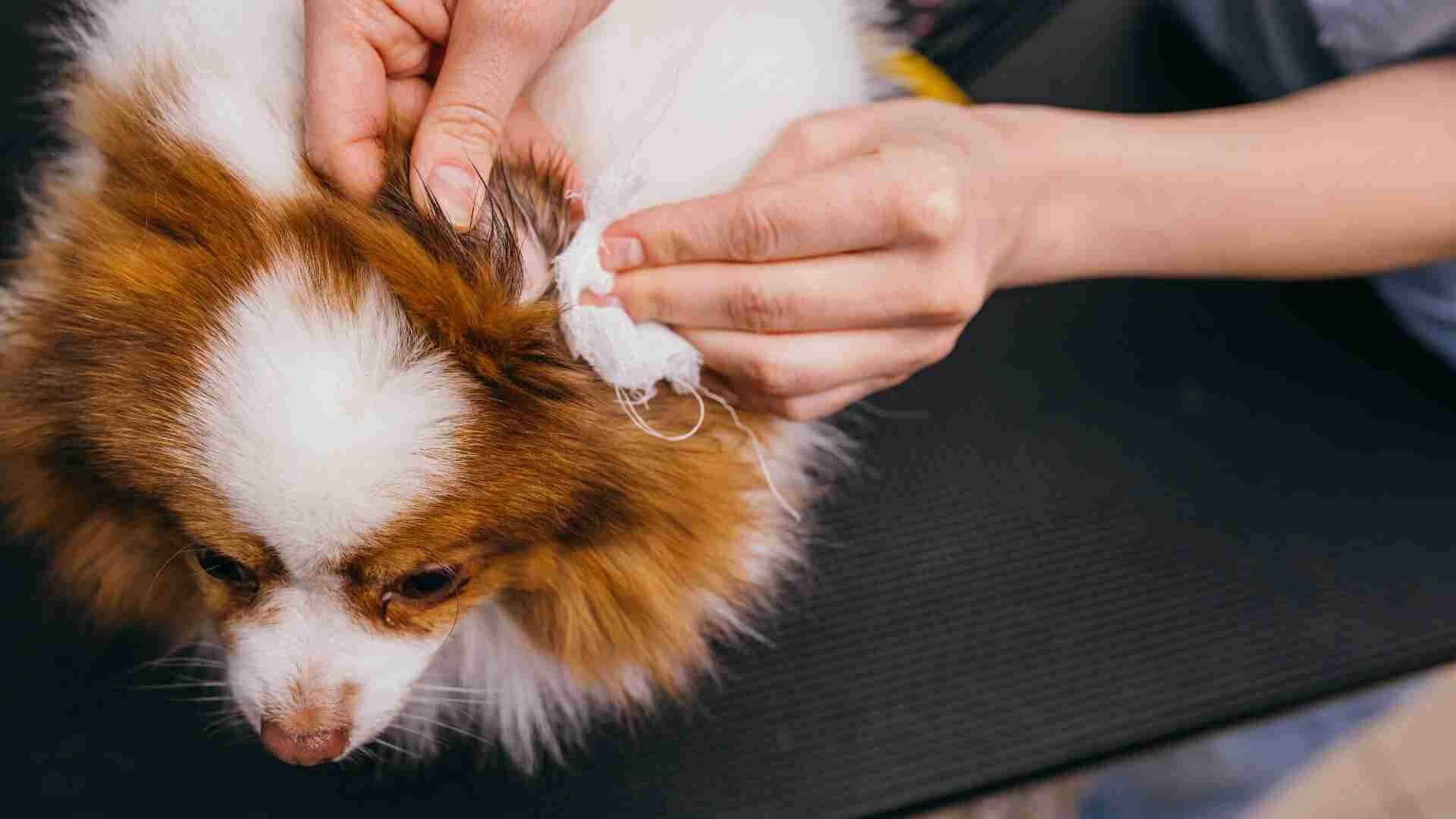
Below mentioned is a step-by-step guide to cleaning your dog’s ears successfully.
- Sit on the floor with your dog, his back end nestled between your legs. If you have a larger breed dog, place him such that his back end is in the corner of the room and one side is against the wall. Place yourself on the other side of him.
- Grab one ear and lift the ear flap vertically to reveal the ear canal and straighten it out.
- Retain the ear cleaning fluid with your other hand while softly yet firmly grasping your dog’s ear flap.
- Squeeze a little ear cleaner into your dog’s ear. Fill the ear canal with enough cleanser. If any cleaner leaks into the ear canal, that’s fine. Do not insert the bottle’s tip into your ear. To avoid the transfer of bacteria or yeast, clean the top of the bottle with a sterile cotton ball soaked in alcohol if it comes into contact with your dog’s ear.
- Keep holding the ear flap vertically in one hand while massaging the base underneath the ear opening with the other hand for about 30 seconds. The cleaners will be able to break up the debris in the ear canal as a result. As the cleaning solution flows around in the horizontal area of the ear canal, you would hear a squishing sound.
- Clean debris from the inside section of the ear flap and the higher ear canal with a cotton ball or gauze while also holding the ear flap up.
- Let your dog wag his tail and shake his head. This permits any leftover ear cleaning fluid and dirt from the ear canal to drain into the ear’s outer aperture.
- Pull the ear flap up gently, and use a cotton ball or gauze to extract the dislodged debris and cleaning fluid from the outer aperture of the ear canal.
- With a cotton ball or gauze, eliminate any debris and residual cleaning solution from the ear canal – only go as far as your finger will touch. Never use a cotton-tipped swab to extract the fluid from the ear canal. This can cause damage to the ear canal and eardrum, as well as push material deeper into the ear canal.
- Reward your dog with treats and praise.
- Carry on with the opposite ear in the same manner.
- Stop and visit your veterinarian if your dog looks to be in pain throughout the cleaning procedure. Continue the cleaning technique as often as your veterinarian suggests. If your dog gets an ear infection that necessitates medicine, wipe the ears and administer the treatment.
How to stop your dog from shaking head?
If you wish to stop your dog from shaking his head all the time, you must address the underlying sickness or allergy. This necessitates a visit to the veterinarian to determine the specific nature of the problem. If your dog’s ears are clean but frequently shaking or scratching, you should see a veterinarian right once. Ear infections can quickly worsen, resulting in profound hearing loss.
The veterinarian will cleanse your dog’s ears, trim any excess fur, and prescribe medications, generally an antibiotic rinse to apply directly to the ears after cleaning. You must also request an allergy test if your dog has had multiple ear infections.
When to contact the vet for a dog shaking head after ear cleaning?
Head shaking that lasts merely a few days or weeks should not be cause for concern. It’s a natural activity for dogs to clean or dry their ears. Do not take matters into your own hands if it occurs in conjunction with any other ear infection symptoms. Schedule an appointment with your veterinarian immediately. It’s probably about time for cleansing if you notice a mild stench or your dog shaking his head more than usual.
Consult your veterinarian if your dog’s ear appears to be red and inflamed, smells yeasty, or he seems to be in discomfort. Without such advice from a veterinarian, ear infections must not be treated at home. If there is a lot of debris in the dog’s ears, your veterinarian should do a deep cleaning of the canal while the dog is sedated.
Why is early diagnosis of a dog shaking head important?

The need for early veterinary diagnosis and treatment for dogs with chronic head shaking cannot be overstated. Most of the disorders described above might cause your dog pain and distress. Not only can proper veterinary care alleviate discomfort and irritation, but it also has the potential to avoid more serious medical issues.
It is critical to determine the cause of head shaking in dogs as soon as possible so that proper therapy can be administered. Getting a diagnosis and treatment as quickly as possible is vital because it could be a warning indication of something more dangerous. Constant forceful head shaking can also cause blood vessels in the ear flap to rupture, resulting in auditory hematomas. This ailment frequently necessitates surgery.
If an infection is causing your dog’s head to shake, keep in mind that ear infections rarely get cured on their own. Ear infections of any kind necessitate veterinary intervention. The source and severity of the condition and the eardrum’s integrity must all be determined.
Watch Dog ear infections: DIY remedies that work | Video
Below are five frequently asked questions (FAQs) regarding your dog shaking head after ear cleaning, followed by appropriate answers.
Should I clean my dog’s ears regularly?
No. Leave them alone if they look and smell good. Your dog’s ears do not need to be cleaned as long as they are healthy. Cleaning a healthy ear can harm its ability to self-clean. If your ears have a slight odour and you notice a head shake, clean them.
How should the skin colour inside my dog’s ear be?
The ear of a healthy dog is light pink, with no redness or irritation. If your dog’s ears are red, it’s most likely an infection, but it could also be inflamed if they’re scratching at them and injuring the tissue.
What do I need to clean the ears of my dog?
Using any special equipment to clean your dog’s ears is not necessary. All you’ll need is an excellent ear cleaning fluid, a few cotton balls or gauze, and some snacks to reward your dog. Cotton tip applicators should not be used since they risk puncturing the ear drum or triggering ear canal trauma. Furthermore, cotton tip applicators might force material deeper into the ear canal.
How can I tell if my dog’s ears are infected?
Your dog may start scratching more than usual. Excessive scratching can indicate an issue that a veterinarian should examine.
If you turn your ears back and notice that they are always moist, it’s essential to do some screening. The dampness may be a result of an ear infection.
Your dog or cat may also shake his head constantly more than usual. This is due to the irritation they are experiencing as a result of ear drainage or itching.
Can parasites be found in dog ears?
Very few parasites reside inside dog ears, though they aren’t prevalent.
Conclusion
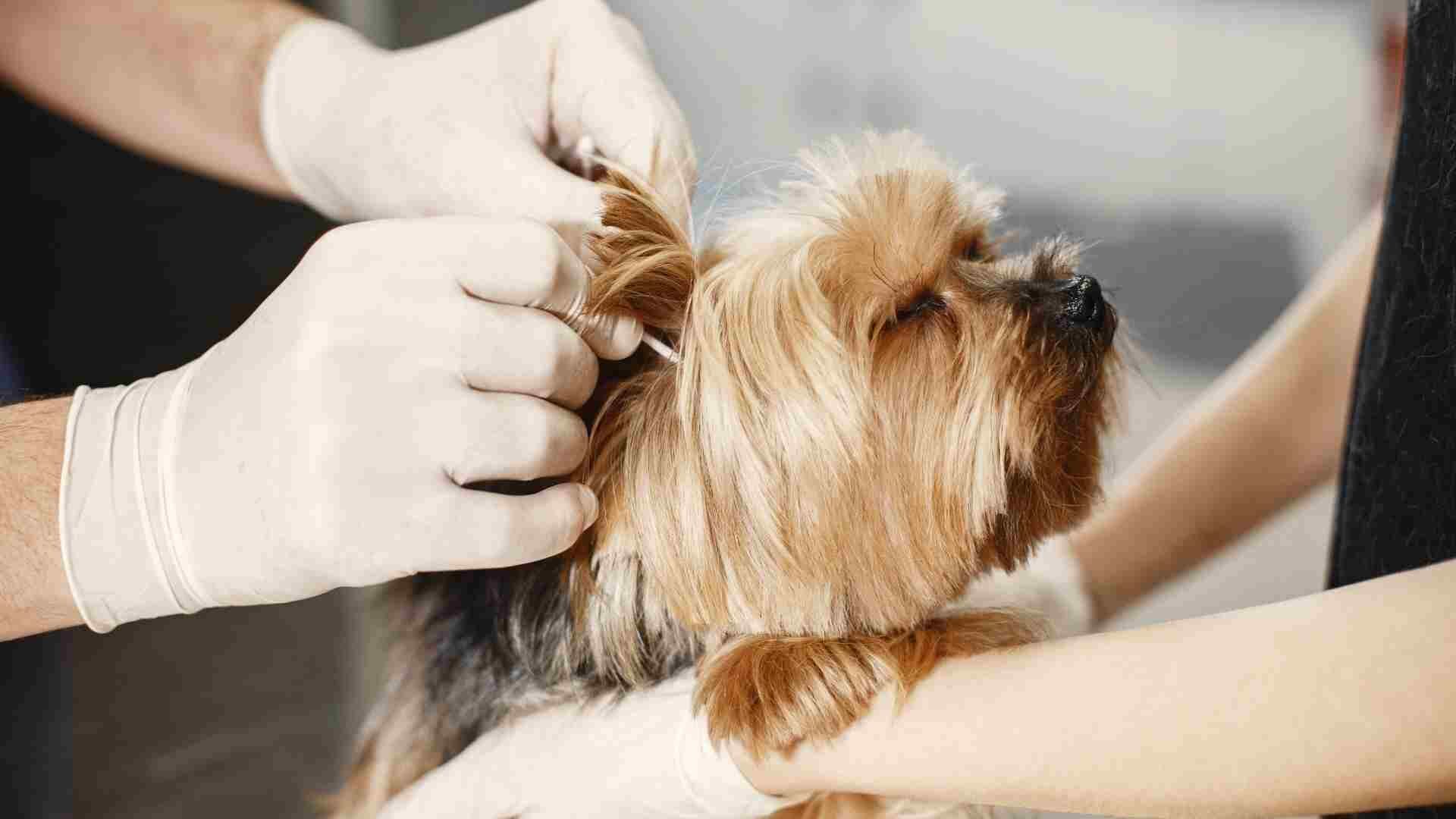
This article explained the potential reasons for your dog shaking head after ear cleaning. The article answers if it’s a natural practice for dogs to shake heads often and any possible causes. A step-by-step guide to clean your dog’s ears successfully is also mentioned. Frequently asked questions regarding your dog shaking head after ear cleaning are also answered.
Bottom up
Please comment below about your ideas and share this “Dog Shaking Head After Ear Cleaning: What to Do Guide” article with your friends.
Stay tuned with our website to find out more exciting stuff. Don’t forget to check out our previous articles too.
Until the, Read about, Are Corgis Good for First Time Owners: Guide with 7 Tips




